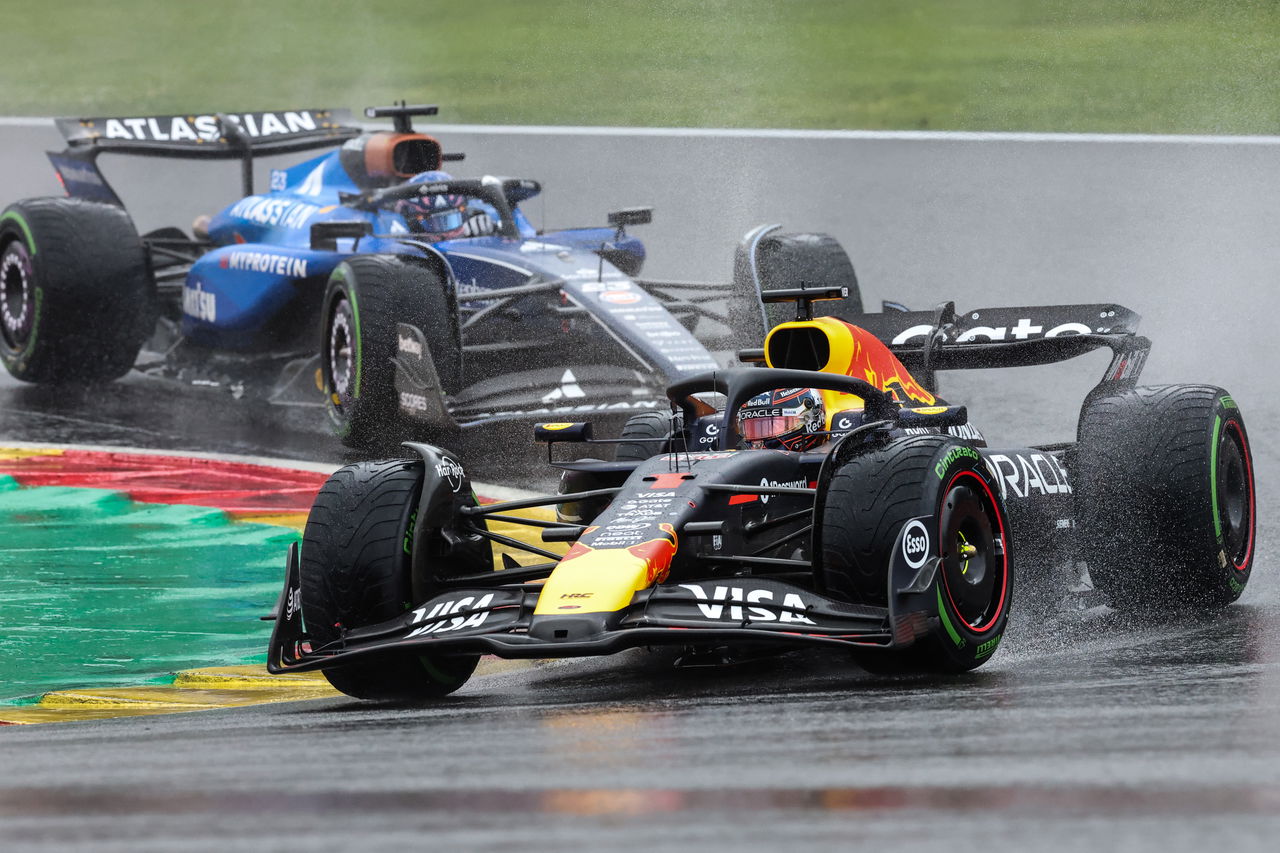Last weekend’s Belgian Grand Prix at Spa Francorchamps experienced significant delays due to heavy rain and poor visibility, sparking mixed reactions among Formula 1 drivers, teams, and fans. The race start was postponed by an hour and a half because of the adverse weather, with drivers expressing differing views on how such situations should be handled.
Max Verstappen criticized the delay, calling it “meaningless,” and suggested that if Formula 1 continues to be overly cautious about rain, racing in wet conditions might cease altogether. During Thursday’s Media Day at the Hungarian Grand Prix, wet weather in Formula 1 became a key discussion topic among drivers.
Carlos Sainz emphasized the importance of minimizing spray and improving visibility, noting that Spa is a unique case due to its dark history of accidents in wet conditions. He suggested better communication might have helped fans understand the safety measures taken and felt the race could have started slightly earlier by following the red flag and safety car protocols more promptly. Sainz also underscored that poor visibility is the main factor preventing racing in the rain, as it poses a fatal risk if overlooked.
Max Verstappen remarked that the decision to delay the race was overly cautious compared to Silverstone, explaining that heavy spray makes it difficult for drivers to see and maintain safe distances, leading to potential accidents. While acknowledging others might disagree, he values the historical excitement of wet races and believes drivers can manage safety themselves.
Pierre Gasly highlighted the challenge of balancing safety and excitement, noting that while the FIA might seem conservative, their caution is crucial to avoid dangerous situations. He expressed optimism about working with the FIA to make more precise judgments in wet conditions and enhance race quality, stressing the importance of driver input in such decisions.
Alex Albon pointed out the inherent difficulties faced by the FIA due to the serious risks wet conditions pose. He explained that current tires and car designs produce excessive spray, severely limiting visibility and making it tough for drivers to perform safely at high speeds.
Fernando Alonso observed that since 2017, changes in regulations and wider tires have worsened visibility in wet weather. He also mentioned that newer, smoother asphalt surfaces reflect water more like a mirror, further reducing grip and visibility, though tire manufacturers might need to address this issue.
Gabriel Boltreto recognized the conservative approach taken during the rain delay, understanding why some found it excessive but valuing safety over risk, especially given Spa’s dangerous past.
Oliver Bearman described visibility in wet conditions as a “long-standing problem” exacerbated by car designs. He mentioned the drainage features of the track might help but believes vision issues remain a significant challenge.
Fan Take: This debate over safety versus racing excitement highlights a critical tension in Formula 1 that directly affects the thrill and unpredictability fans love. How the sport balances driver safety with keeping wet races competitive could shape the future of Formula 1, potentially influencing car design, race strategy, and fan engagement.



